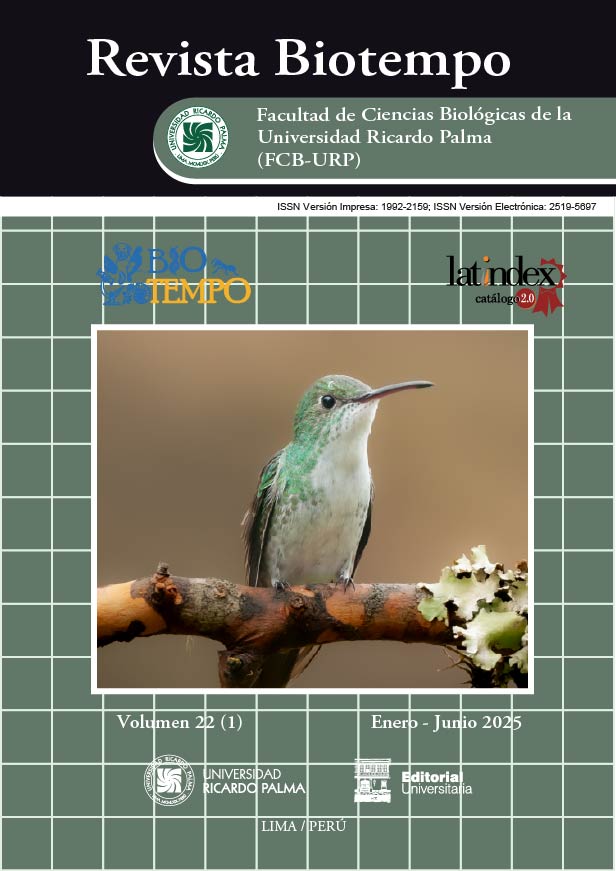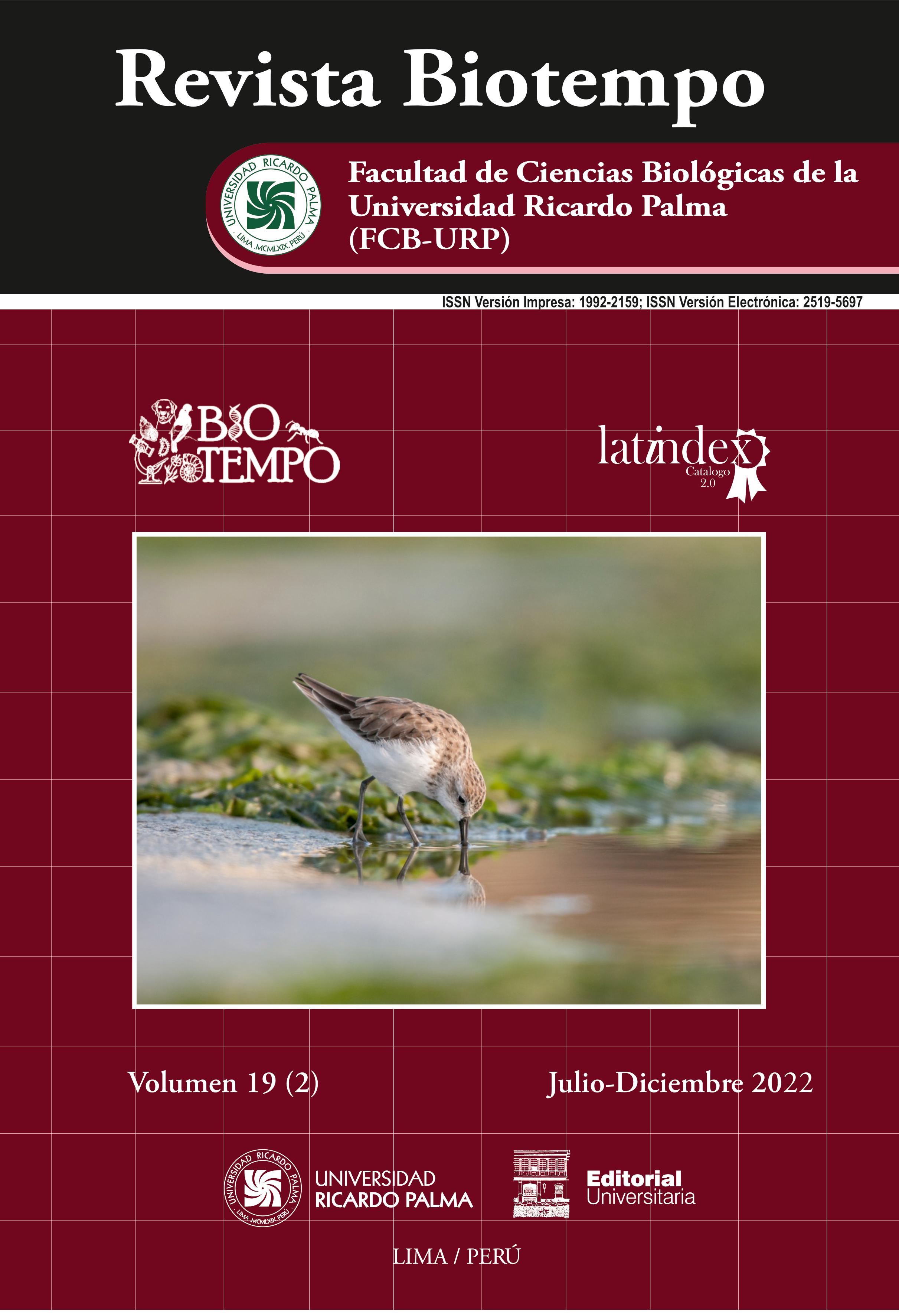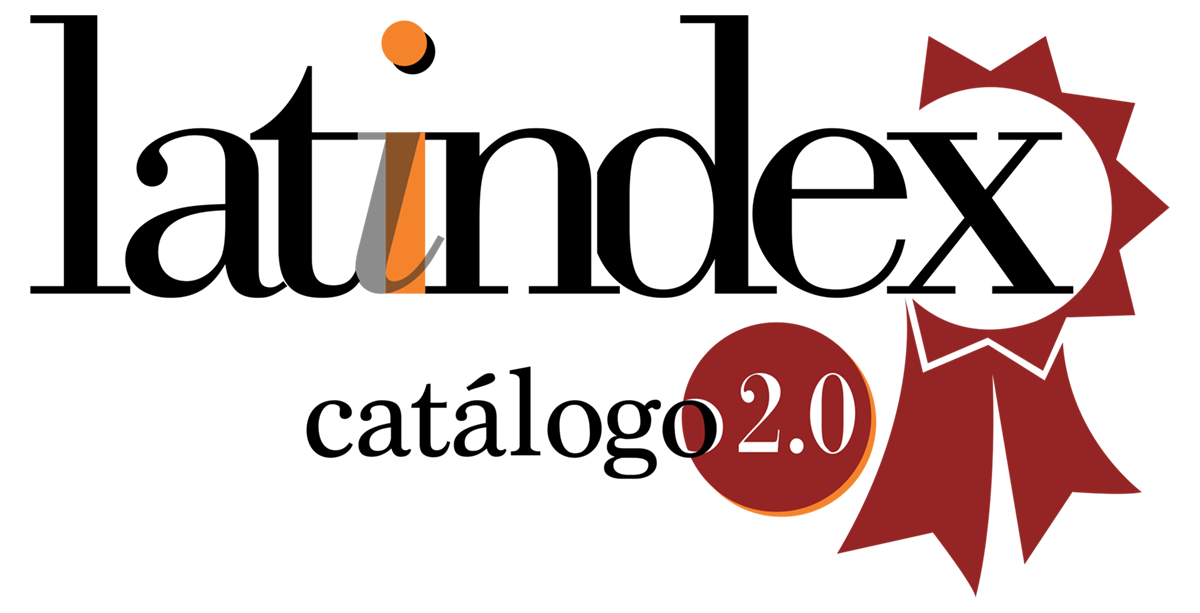Medically important scorpions associated with urban forests in Panama city
DOI:
https://doi.org/10.31381/biotempo.v22i1.7315Keywords:
Biodiversity, Buthidae, Distribution, Scorpion, Urban ForestAbstract
The urban forests of Panama City represent essential habitats for various scorpion species, including those of medical importance within the Buthidae family. This study aimed to analyze the distribution of these species in urban environments and their relationship with habitat fragmentation. Two methodological approaches were employed: a review of the collection at the G.B. Fairchild Museum of Invertebrates and field sampling through nocturnal searches using UV light at various sites in the city. A total of 56 individuals belonging to five species were recorded: Centruroides granosusChamberlin, 1920 (32.14%), Centruroides margaritatus Gervais, 1841 (30.36%), Tityus jaimei Armas & Fet, 2001 (23.21%), Centruroides bicolor Koch, 1844 (10.71%), and Tityus cerroazul Turel & Santibáñez-López, 2015 (3.57%). The results indicate that C. granosus and C. margaritatus are the most abundant and widely distributed species, demonstrating a remarkable adaptation to urban environments, whereas T. cerroazul has a restricted distribution, suggesting greater sensitivity to landscape transformation. The cartography developed with ArcGIS revealed distinct patterns of urban habitat occupation, with some species preferring fragmented green areas and others adapting to more intervened spaces. In conclusion, urban forests play a crucial role in the conservation of these arachnids, providing key refuges for species with different levels of synanthropy. The preservation of these environments is essential to ensure population stability and mitigate the effects of urbanization on local biodiversity.










